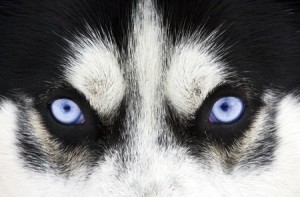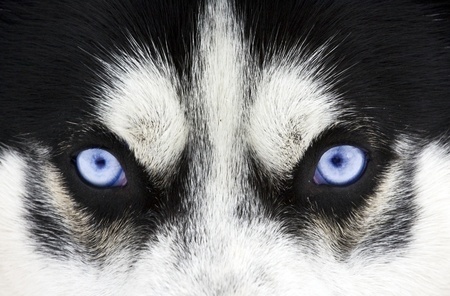
Atypical antipsychotics are now the largest-selling class of drugs in the U.S., accounting for more than $14.6 billion in annual sales by 2010. They are also the class of psychiatric drugs with the most negative side effects—and that’s saying something when you consider the others, namely antidepressants and anti-anxiety meds. Because schizophrenia effects such a small percentage of the population, the initial market for atypical antipsychotics was limited. The path to increased sales led through finding a wider market than just individuals with schizophrenia. So the pharmaceutical companies began to look at the behavioral disorders.
For the most part, these disorders are less serious than schizophrenia, but many are severe nonetheless, including hyper-activity in children and agitation in elderly patients. Marketing atypical anti-psychotic agents to patients with this broader category of disorders held the promise of sales reaching blockbuster levels.
There were two obstacles to this broader promotion. First, the FDA had only approved atypicals for the treatment of severe psychosis—schizophrenia—in adults. Their use for other disorders was then off-label. FDA regulations prohibit pharmaceutical companies from promoting drugs for such additional uses.
The second obstacle was that they didn’t have a very good safety profile. Used for a serious disorder like schizophrenia, the adverse effects of atypicals were understood to be a trade off. “But the risk–benefit calculus is much less favorable when milder conditions are involved.” Despite these impediments, the temptation was too much for the manufacturers to resist and a number of lawsuits over the past few years attest to this. Read “Antipsychotic Medications Are Spelling Legal Trouble for Drugmakers” for more information on this. Robert Field concluded his article with this observation:
In light of the large number of successful enforcement actions and the continued potential for abuses, prosecutors are likely to remain vigilant concerning the marketing of atypical antipsychotic agents. Repeated violations could generate even larger penalties. Publicity over the large settlements has put physicians and the public on notice about the hazards of indiscriminate use of this class of drugs. In the future, regulators, clinicians and patients should view atypical antipsychotics and marketing claims concerning them with caution.
Over time, antipsychotics have “evolved.” Some are now approved as adjunct medication for treating major depression. Many are now are also prescribed for the treatment of bipolar disorder. And then there is off-label market for several behavioral disorders. No longer are they relegated to just the niche market of people diagnosed with schizophrenia.
The FDA-approved uses for antipsychotics now include the treatment of bipolar I disorder, schizophrenia, schizoaffective disorder and as an adjunct treatment for major depression. In addition to their FDA approved uses, several atypicals are used off-label to treat various psychiatric conditions. They have been studied as off-label treatment for the following conditions: ADHD, anxiety, dementia in elderly patients, depression, eating disorders, insomnia, OCD, personality disorder, PTSD, substance use disorders, and Tourette’s syndrome.
Clozapine (Clozaril) was the first atypical developed. Introduced in Europe in 1971, it was voluntarily pulled by its manufacturer when it was shown to cause a condition called agranulocytosis, a dangerous decrease in the number of white blood cells. It was then approved by the FDA in 1989 for the treatment of treatment-resistant schizophrenia. In 2002 the FDA also approved clozapine for reducing the risk of suicidal behavior. However, the FDA also requires it to carry five black box warnings for a series of adverse health effects including cardiovascular and respiratory problems and increased mortality in elderly patients with dementia-related psychosis.
The five main atypical antipsychotics currently used in the US are: Aripiprazole (Abilify), Olanzapine (Zyprexa), Quetiapine (Seroquel), Risperidone (Risperdal) and Ziprasidone (Geodon). There are six newer ones whose off-label use have not been documented or researched as extensively as the preceding five have been. These newer ones are: Asenapine (Saphris), Iloperidone (Fanapt), Lurasidone (Latuda) and Paliperidone (Invega). Two brand new antipsychotics, Rexulti (brexpiprazole) and Vraylar (cariprazine), will be discussed below.
There are also six other atypicals that have not been approved for use in the US. They are: Amisulpride, Blonanserin, Melperone, Sertindole, Sulpride and Zotepine. The following chart lists the FDA-approved indications for atypical antipsychotics.
|
Atypicals |
Bipolar 1 |
schizophrenia |
schizoaffective |
Major depression |
|
Aripiprazole |
yes |
yes |
yes |
|
|
Olanzapine |
yes |
yes |
yes |
|
|
Quetiapine |
yes |
yes |
yes |
|
|
Risperidone |
yes |
yes |
||
|
Ziprasidone |
yes |
yes |
||
|
Asenapine |
yes |
yes |
||
|
Iloperidone |
yes |
|||
|
Lurasidone |
yes |
yes |
||
|
Paliperidone |
yes |
yes |
||
|
Clozapine |
yes |
yes |
||
|
Brexpiprazole |
yes |
yes |
||
|
Cariprazine |
yes |
yes |
Schizophrenia is the primary disorder for which antipsychotics are targeted and bipolar 1 disorder is second. Three of the main antipsychotics have been approved as augmentations for antidepressants, Aripiprazole, Olanzapine and Quetiapine. Interestingly, the medication guides for most of the antipsychotics seem to downplay the drug class they are in. They only refer to themselves as “antipsychotic” within the warning of a potential side effect called neuroleptic malignant syndrome. Coincidentally, that is the only place the other common term for antipsychotic, neuroleptic, is found.
Here is an example of how the warning for the potential side effect of neuroleptic malignant syndrome: was worded for Seroquel (quetiapine): “neuroleptic malignant syndrome (NMS). NMS is a rare but very serious condition that can happen in people who take antipsychotic medicines, including SEROQUEL.” Many of the other antipsychotics have similar wording for the discussion of this side effect. Abilify never refers to itself as an antipsychotic or neuroleptic in its medication guide. Under the discussion of possible side effects with Abilify is the following:
Neuroleptic malignant syndrome (NMS): Tell your healthcare provider right away if you have some or all of the following symptoms: high fever, stiff muscles, confusion, sweating, changes in pulse, heart rate, and blood pressure. These maybe symptoms of a rare and serious condition that can lead to death. Call your healthcare provider right away if you have any of these symptoms.
But you will find a lot of discussion about antidepressants in some of these medication guides. Many of the antipsychotics use language that gives the impression that the drug is an “antidepressant,” not an “antipsychotic.” The medication guides for Abilify (aripiprazole), Seroquel (quetiapine) and Latuda (lurasidone) have an entire section that discusses what someone needs to know about antidepressant medications. Someone not familiar with the various classes of medications who are taking these drugs might think they are taking antidepressant and not an antipsychotic.
The following table summarizes the evidence for off-label use of the five primary atypical antipsychotics currently used in the US are: Aripiprazole, Olanzapine, Quetiapine, Risperidone and Ziprasidone. The strongest evidence of efficacy is noted as “++”, then “+”. “0” means there have been no clinical trials attempted; “-“ represents no efficacy and “+-“ is for mixed results. “FDA” represents FDA approval for the condition. Keep in mind these ratings are based upon the data from the drug companies in their quest to expand the antipsychotic market.
|
Disorder |
Aripiprazole |
Olanzapine |
Quetiapine |
Risperidone |
Ziprasidone |
|
Anxiety |
0 |
– |
++ |
– |
– |
|
ADHD |
0 |
0 |
0 |
+ |
0 |
|
Dementia |
++ |
+ |
+ |
++ |
0 |
|
Depression |
FDA |
FDA |
FDA |
++ |
+ |
|
OCD |
0 |
+ |
– |
++ |
– |
|
PTSD |
0 |
+- |
+- |
++ |
0 |
|
Tourette’s |
0 |
0 |
0 |
+ |
– |
Risperidone was the first of the main five antipsychotics brought to market in 1990 by Janssen. In 1996 Eli Lilly brought olanzapine to market in September of 1996 and AstraZeneca brought quetiapine to market in September of 1997. Pfizer brought ziprasidone to market in June of 2002 and Bristol-Myers Squibb had aripiprazole approved in November of 2002. All five are currently off patent. The patent expiration dates for the newer antipsychotics are as follows: Asenapine (Saphris) in 2020, Iloperidone (Fanapt) 2027, Lurasidone (Latuda) 2018. Paliperidone (Invega) lost its exclusivity on October 6, 2014.
Two brand new antipsychotics, Rexulti (brexpiprazole) and Vraylar (cariprazine) were just approved by the FDA in the summer of 2015. Vraylar was approved for the treatment of schizophrenia and bipolar disorder in adults. Rexulti was approved as a treatment for schizophrenia and as an add-on treatment for adults with major depression.
The Rexulti medication guide also has a section describing what you need to know about antidepressants. It has the same warning for the potential side effect of neuroleptic malignant syndrome (NMS) found with Abilify. It also lists major depression as the first disorder it is used to treat; schizophrenia is listed second. So it seems that it is positioning itself to be seen more a treatment for depression than schizophrenia.
To its credit, Vraylar’s medication guide regularly refers to antipsychotics and the side effects of antipsychotics. And I did not find even ONE reference to “antidepressant.” However, its discussion of NMS is subtle, never explicitly saying it could occur from Vraylar. Under warnings and precautions it says:
Neuroleptic Malignant Syndrome (NMS), a potentially fatal symptom complex, has been reported in association with administration of antipsychotic drugs. Clinical manifestations of NMS are hyperpyrexia, muscle rigidity, delirium, and autonomic instability. Additional signs may include elevated creatine phosphokinase, myoglobinuria (rhabdomyolysis), and acute renal failure.
However, truth in advertising isn’t the only concern, at least with Vraylar. Johanna Ryan described a detailed investigation she did of the Vraylar studies registered with ClinicalTrials.gov. Out of the twenty registered studies, seventeen were completed, but still had not shared their results on the government website, a mandatory step in the process. I reviewed all the registered studies for Vraylar on December 4, 2015 and there were still no posted results from the completed clinical trials for Vraylar almost two months after Ryan’s article was posted on davidhealy.org.
She found at least six published papers directly based on these studies; only two were posted on CT.gov. The average number of listed authors was six to eight, with an academic noted as the “lead” author. The rest were drug company employees. Some papers only had employee-authors.
Overwhelmingly they were contract researchers. Some were freestanding clinical trial businesses. Others were busy medical practices with a thriving research business “on the side.” The first recruited subjects largely by TV, newspaper and online advertising which emphasized free treatment. The second combined some advertising with recruitment among their own patients.
The adverse side effects with antidepressants are increasingly evident, as is their well-documented ineffectiveness. But they are more acceptable by our cultural psyche than antipsychotics. Remember Listening to Prozac? Antipsychotics (neuroleptics) are now the “it” class of psychiatric medications. As they expand their market reach to beyond schizophrenia, the term “antipsychotics” has become a liability for sales. “Anti “depression” medication is an easier sell than anti “psychotic.” So it seems there has been an intentional effort by some pharmaceutical companies to blur the lines between the drug classes of antidepressants and antipsychotics.
I think a fitting metaphor for what’s happening is to think of this marketing strategy as an attempt to pass off wolves in sheep’s clothing. But you have to wonder just how bad the adverse effects of antipsychotics (the wolves) are when the less harmful half of the metaphor—the “sheep”—is antidepressants.





